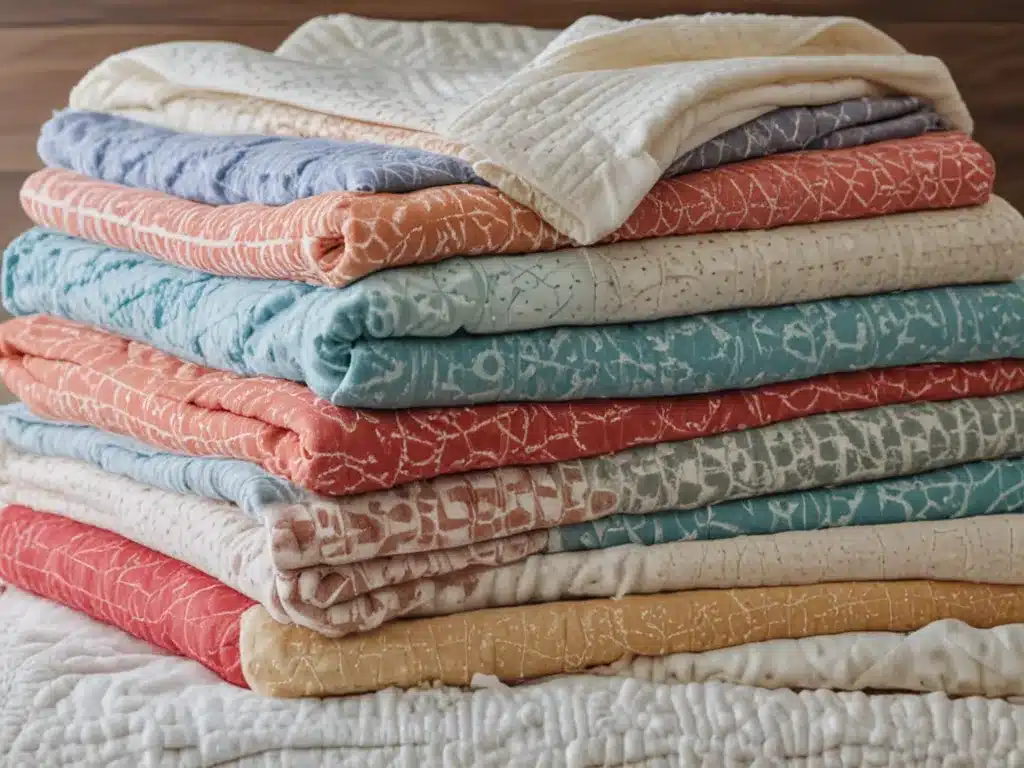Introduction
Cleaning throw blankets and quilts regularly is important to keep them looking their best and extend their lifespan. Dust, dirt, stains, and odors can build up over time, so it’s good to have a cleaning routine to keep them fresh. The methods for cleaning throws and quilts depends on the fabric and construction. With some simple supplies and techniques, you can keep my blankets clean and ready to use for years to come.
Assessing the Fabric
The first step is to check the care label and identify the fabric content. This will determine the best cleaning method to use.
Common Throw and Quilt Fabrics
-
Cotton – Durable and breathable. Can be machine washed and dried.
-
Wool – Warm and soft. Spot clean only to prevent shrinking.
-
Polyester – Colorfast and wrinkle resistant. Can be machine washed and dried.
-
Silk – Delicate and luxurious. Hand wash or dry clean only.
-
Linen – Natural fiber that resists dirt. Can be machine washed.
-
Chenille – Soft piled fabric. Spot clean only.
-
Cashmere – Luxurious but delicate. Dry clean only.
Once I’ve identified the main fabric, I’ll know the best cleaning method to use.
Regular Maintenance
It’s best to stay on top of cleaning throws and quilts before stains have a chance to set in. Here are some tips for regular maintenance:
Shake Out and Air Out
- Every couple of weeks, I take the throw outside, shake it out vigorously and let it air out for 30 minutes. This helps release dirt, dust and odors.
Spot Cleaning
- For minor stains or dirt, I spot clean the area with a small amount of mild detergent and cold water. I dab it and avoid rubbing to prevent the stain from setting.
Vacuuming
- Using a handheld vacuum attachment, I gently vacuum both sides of the throw or quilt to remove loose dirt and dust. I check the crevices and seams.
Steaming
- To freshen up and remove odors from wool or silk throws, I use a garment steamer to lightly steam the fabric. This helps sanitize and remove wrinkles.
Deep Cleaning Methods
Every few months, it’s important to deep clean throws and quilts depending on the fabric:
Machine Washing
For cotton, polyester, linen or machine-washable throws:
-
I wash on a gentle cycle using cold water and a mild detergent.
-
I never use bleach or fabric softener which could damage the fabric.
-
I wash similar colors together and avoid overloading the machine.
-
I air dry flat or tumble dry on low if cloth allows.
Hand Washing
For delicate fabrics like wool, silk, or chenille:
-
I fill a tub with cool water and a very small amount of mild detergent, then let the throw soak.
-
I gently swish it around and soak for 15-20 minutes.
-
I rinse thoroughly with clean water to remove all soap.
-
I roll it in a towel to absorb moisture, then lay flat to air dry.
Dry Cleaning
For cashmere, or throws with specific dry clean only labels:
-
I take it to a professional dry cleaner 2-3 times a year. This deep cleans without risk of shrinking or damage.
-
I alert them of any stains or heavily soiled areas to pretreat.
-
I request light starching if I want a pressed look.
Stain Removal Tips
If stains occur, timely spot treatment can often remove them. Here are some tips:
-
Food stains – Dab with dish soap and cold water. Avoid hot water which can set the stain.
-
Drink stains – Rinse with cold water and dab with a vinegar-water solution.
-
Oil/grease stains – Sprinkle with cornstarch or baking soda. Let sit for 15 minutes before vacuuming.
-
Ink or marker stains – Dab with isopropyl alcohol using a clean cloth. Avoid rubbing.
-
For tough stains, take to a professional cleaner as soon as possible. Old or set-in stains are harder to remove.
Proper Storage
To keep throws and quilts clean between uses, I store them properly:
-
I shake them out and allow to fully air dry after washing.
-
I fold neatly or roll up to prevent wrinkles.
-
I store in a clean, dry place like a closet or chest.
-
I avoid plastic bins or bags which could trap moisture.
-
I use cedar blocks or sachets to keep moths away from wool items.
With the proper care and regular cleaning, my favorite throw blankets and quilts will stay fresh, soft and cozy for many years of use. Following the fabric recommendations and using the right methods keeps them clean, extends their lifespan, and retains their appearance.







